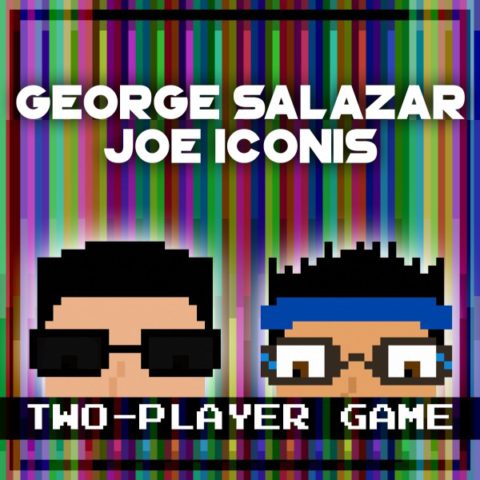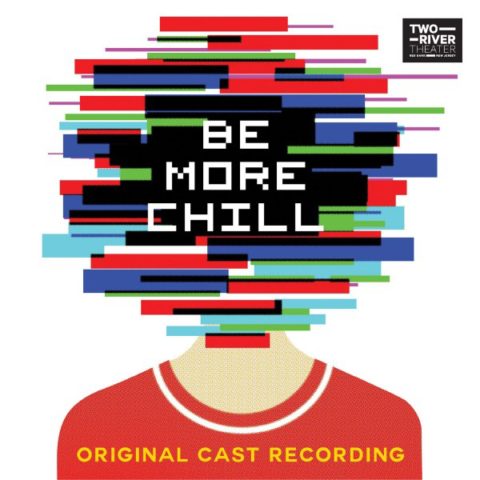Shrieking. Trembling. Tears of joy. Expect to see a fair number of teenage theater geeks losing their shit in the generally more sedate environs of Feinstein’s at the Nikko this weekend. For Joe Iconis and George Salazar, that’s a typically “Chill”-y reception.
“Be More Chill,” an upbeat, offbeat sci-fi high school musical—with songs by Iconis and a fan-fave featured performance by Salazar—is a viral sensation. The cast recording of its 2015 premiere production at a modest regional theater in New Jersey has been streamed over 150 million times and prompted a sold-out Off-Broadway run this summer. Which in-turn prompted a Broadway transfer, set to open in February.


Between the Jersey and Off-Broadway runs, Salazar—a rising star after notable New York turns in “Godspell” and “The Lightning Thief”—was invited to create and perform a cabaret act at 54 Below, Feinstein’s sister club in Manhattan. Rather than go solo, Salazar turned to Iconis, a cabaret veteran who frequently performs concerts of his witty original tunes with group of Broadway singers under the moniker “Joe Iconis and Family.”
The pair’s duo act, “Two-Player Game” has only been performed seven times prior to this weekend’s engagement but has already been released as an album.
Salazar, 32, an Orlando native who has never been to San Francisco before, is thrilled to make his local debut with this selection of Iconis originals—including “Michael in the Bathroom,” his signature number from “Be More Chill.”
“I wish I had a show like ‘Be More Chill’ growing up,” says Salazar, addressing the musical’s outlandishly delivered message of self-acceptance. (The script features oral ingestion of popularity-boosting microchips and a sexy anthropomorphized supercomputer).

Salazar in “Be More Chill”
Describing himself as “an out and proud soldier for good in the queer community and for all communities that feel they don’t have a voice,” Salazar explained that, in addition to being gay, “I’m half Filipino and half Ecuadorian. I struggled with my identity as a teenager. Every time I had to take a standardized test and they asked about ethnic background there was no mixed-race bubble. I had to pick either my dad’s side or my mom’s. You’re already in this stressful situation where you’re taking a test, and the first thing you have to do is choose which parent matters more.”
There’s a note of discomfort in Salazar’s voice when he admits that as a high school theater geek himself, “there was nobody to look up to in the entertainment world who I could see myself in. I kept trying to see myself in white actors. I would sit and write my name over and over, trying to figure out what I would change my last name to if I got a break in the business.”
Iconis, 37, suggests that while the adolescent protagonists of “Be More Chill” and other recent Broadway hits “Mean Girls” and “Dear Evan Hansen” may help attract younger audiences to theater, they also have an inherent appeal to adult audiences.

Joe Iconis
“Everyone has shared the experience of feeling alone, and like they aren’t part of something larger,” he says. “But high school kids are able to more openly express anxieties and fears that we can be less comfortable displaying when we get older.”
“Sitting in the audience as an adult, you can share in the pain of youth, but the very fact that you’re sitting there watching it means you made it through. So there’s a sort of built-in optimism.”
For the queer kids within “Be More Chill”’s fervent teen fandom, there’s also plenty of optimism that they’ve built onto the show: Since the cast album began streaming three years ago, an ever-growing volume of online fan art and fiction has appeared on the internet. Much of it features Salazar’s character, Michael, getting it on with the lead character, Jeremy, his onstage platonic BFF.
“The fan base of “Be More Chill” has taken on this idea that all of the characters are gay or transgender,” says Iconis, who is neither. “I love the idea of everyone having whatever interpretation they want. I love to leave things open.”
“Full disclosure,” says Salazar. “When we were rehearsing the show, I said ‘Lets see what it would be like playing Michael as gay,’ but ultimately we decided against it.”
“Michael is 16. I didn’t start exploring my own sexuality until I was 17. We didn’t assign a sexuality to him; I wanted him to exist before the inner turmoil and self discovery.”
Also, says Iconis, “We didn’t want to create a stereotypical situation where there was a gay boy pining over his straight friend. Maybe they’re both gay and in love with each other, but they don’t understand it yet. Or maybe they’re just best friends.”
Originally published in the Bay Area Reporter
